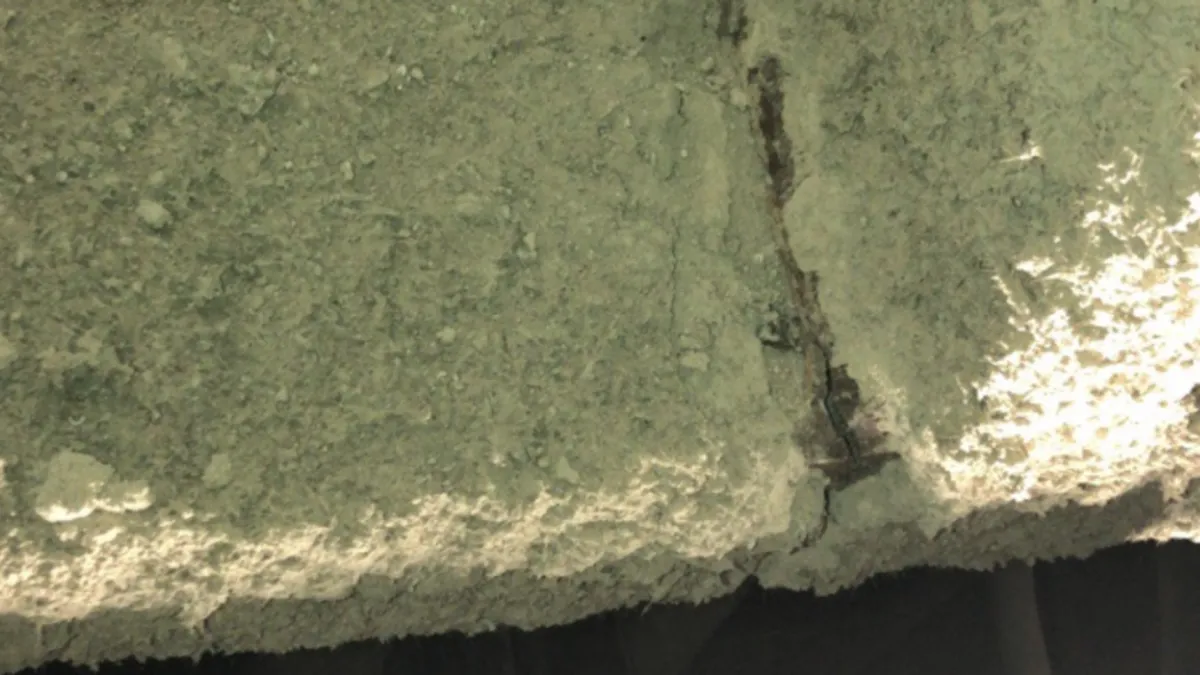UPDATE: February 8, 2019: Crews have started the process of reinforcement and repairs at the shuttered Salesforce Transit Center in San Francisco, but work is not scheduled to be complete until the first week of June, according to a Transbay Joint Powers Authority press release. The $2.2 billion center has been closed since September when two cracked steel beams were discovered.
On Feb. 2, crews installed shoring at a similar girder system elsewhere at the center in anticipation of reinforcing that area even though no cracks were found there. The steel plates necessary to complete the fix approved by the Metropolitan Transportation Commission’s Peer Review Panel in December are currently being manufactured and should be delivered to the site in time to begin installation in March.
After installation, shoring at both the site of the cracked beams and the second location will be removed, but the authority has not yet specified the center's reopening date.
Dive Brief:
- Mark Zabaneh, executive director of the Transbay Joint Powers Authority, told board members at their Jan. 10 meeting that the authority had directed joint venture contractor Webcor/Obayashi to proceed with repairs of cracked beams at the $2 billion Salesforce Transit Center in San Francisco.
- The contractor will begin the repair by first procuring the necessary material. The project team — which consists of the authority, engineering firm Thornton Tomasetti, Webcor/Obayashi, subcontractors and suppliers — will also look for other areas at risk of the same type of “brittle fracture” that occurred with the original, damaged beams and implement the repair in additional locations if necessary. The Metropolitan Transportation Commission’s Peer Review Panel will help set the criteria for determining if any additional beams are at risk.
- Zabaneh also told the authority’s board members that the panel is still working on its final report, which will identify a definitive cause of the cracked beams that have kept the center closed since Sept. 25. He added that the panel is also working to determine what additional inspections or reviews are necessary prior to reopening the center to the public. A schedule prepared for the board indicated that there is no estimated completion date yet for repairs and associated work.
Dive Insight:
In a December presentation to the authority, consulting engineer LPI reported that fissures in the damaged steel girders evolved from small cracks that formed in welded areas of the beams. This, the firm said, led to cracks in the flanges. An assessment by Bruce Gibbons of Thornton Tomasetti indicated that the cracks did not affect the strength of the beams and that they still had the capacity to support the weight of the building and related occupancy loads. The fix, which was accepted by the panel, will see crews install bolted cover plates at fracture areas.
The authority has placed the financial responsibility for repairs on Webcor/Obayashi, since the company provided a warranty on the entire project, which is standard practice. However, it is almost certain that Webcor/Obayashi had its subcontractors and material suppliers warranty their work as well so they could recoup a portion or all of the money they spend on repairs if the cracks were another company’s fault.
In October, Webcor/Obayashi filed a lawsuit against the authority alleging breach of contract and accusing the agency of dragging its feet on making important decisions during the construction process. This, according to the lawsuit, led to 12,000 requests for information — many related to design errors and omissions — as well as other time-killing, costly problems. Neither party has tied the complaint to the cracked beams.












